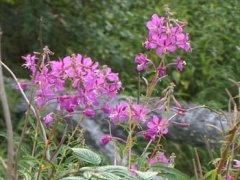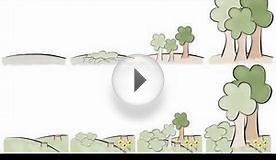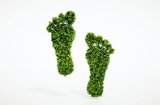Ecological succession questions
What is ecosystem succession? How do biomass, productivity and biodiversity change during succession?
Succession is the process of ecosystem recovery after some disturbance. Biomass is at maximum in the undisturbed ecosystem; it increases up to this maximum during succession. Plant productivity also grows, especially if the plant cover was destroyed substantially by the disturbance. Productivity of the ecosystem as a whole (i.e. the difference between net primary productivity and its consumption by ecosystem's heterotrophs) in the process of succession tends to zero. Biodiversity measured as the total number of species in the ecosystem does not change. However, biodiversity measured as the number of species having a substantial population density is lower in the undisturbed ecosystem than in the disturbed one.
This short list answers the posed question, but demands a few clarifications.

Fireweed, a typical species-repairer in the boreal zone
In each region there is only one type of undisturbed ecosystem. Its characteristics are written in the genomes of the species composing the natural ecological community. Had it not been so, then one would have never observed such stable ecosystems like boreal or tropical forests and bogs. Complete recovery of the disturbed ecosystem to its initial undisturbed state can only occur if the ecosystem is no longer disturbed. During succession the undisturbed environment is fully restored, this includes concentrations of chemical substances in soil, atmosphere and water, including atmospheric and soil humidity. Species that are dominant in the undisturbed ecosystem maintain these environmental parameters at the level optimal for life of the ecological community. But the soonest recovery of the ecosystem after disturbance is performed by a different ecological type of species that can be called species-repairers. In the undisturbed ecosystem these numerous species are present at very low densities, but become abundant after disturbance. These species succeed each other in a non-random manner during succession gradually decreasing their population numbers. They thus work against themselves, changing the environmental parameters in a way that is detrimental for species-repairers, but optimal for the dominant species of the undisturbed ecosystem. The properties of the succession process that are listed above follow from these important characteristics of succession.


|
Is your lunch causing global warming? Cars and factories are major sources of greenhouse gas emissions that are heating up the planet. But what you ... An article from: New York Times Upfront Book (Scholastic, Inc.) |

|
Wallmonkeys Ecological Footprint Symbol Peel and Stick Wall Decals (24 in W x 16 in H) Home (Wallmonkeys)
|
 The September 11 attacks (also referred to as September 11, September 11th or 9/11) were a series of four suicide attacks that were committed in the United States on September 11, 2001, coordinated to strike the areas of New York City and Washington, D.C. On that Tuesday morning, 19 terrorists from the Islamist militant group al-Qaeda hijacked...
The September 11 attacks (also referred to as September 11, September 11th or 9/11) were a series of four suicide attacks that were committed in the United States on September 11, 2001, coordinated to strike the areas of New York City and Washington, D.C. On that Tuesday morning, 19 terrorists from the Islamist militant group al-Qaeda hijacked...